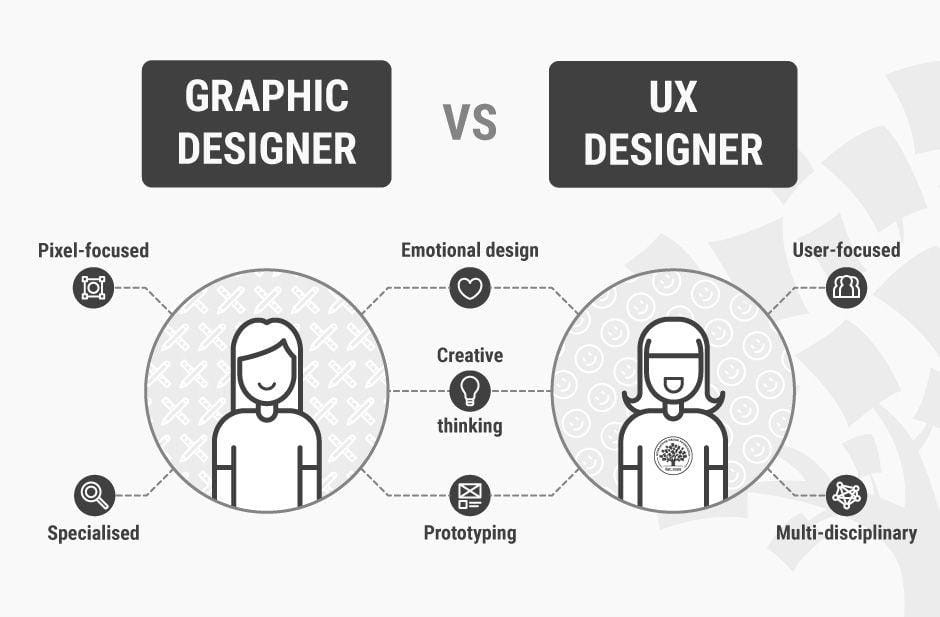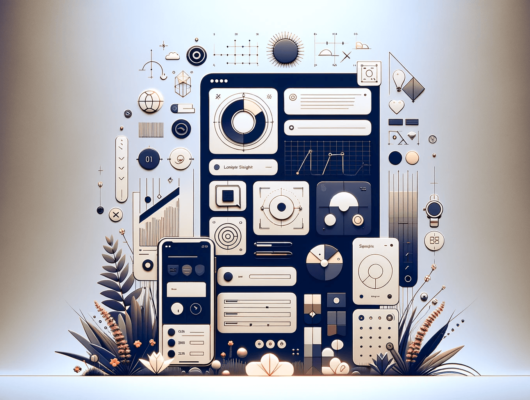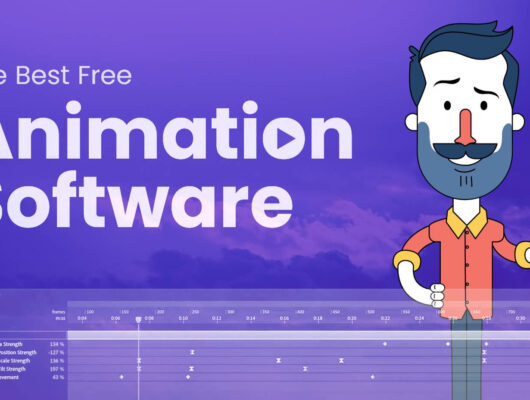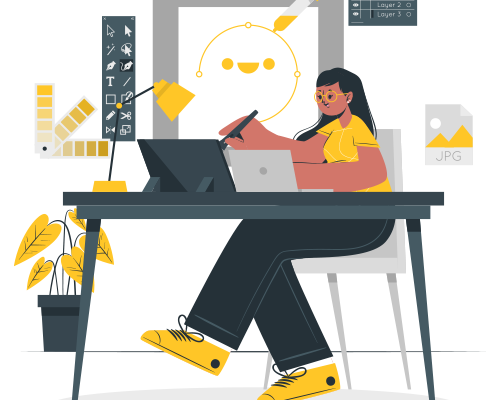What’s the difference between a UX designer and a graphic designer? Learn what sets these roles apart and how you can transition between them.
UX (User Experience) designers and graphic designers focus on distinct aspects of design, despite some shared skills.
UX Designer:
- Focus: UX designers prioritize the overall experience of a product or service, emphasizing usability, accessibility, and functionality for a seamless user journey.
- Skills: They employ research methods, wireframing, prototyping, and user testing to craft designs aligned with user needs and behaviors.
- Goal: Their primary objective is to enhance user satisfaction by improving the usability, accessibility, and enjoyment of the interaction between users and the product.
Graphic Designer:
- Focus: Graphic designers concentrate on the visual elements of a project, creating visually appealing designs using typography, color theory, and layout.
- Skills: They excel in design software, understand branding principles, and convey ideas visually.
- Goal: Their aim is to communicate specific messages or evoke particular emotions through designs, often working on branding, marketing materials, or visual content.
Transitioning between roles:
Transitioning involves building upon shared foundational design principles:
- Skill Development: Identify skill gaps. Transitioning from graphic design to UX may involve learning user research, information architecture, wireframing, and prototyping.
- Experience: Gain practical experience through freelance work, courses, or internships focusing on the target role’s skills.
- Portfolio Adaptation: Showcase projects emphasizing relevant skills for the new role. Highlight crossover skills or experiences beneficial to the transition.
- Networking and Learning: Engage with professionals in the desired field, attending workshops, webinars, or communities for insights and connections.
Transitioning takes time, but a commitment to learning and adapting skills can pave the way toward success in a new design role.
Graphic design primarily revolves around the visual aspects, encompassing elements like typography, layout, and imagery to create visually compelling outputs. In contrast, UX design operates within a larger scope, considering the entirety of the user’s interaction with a product or service. It’s about ensuring that every touchpoint, from initial contact to final interaction, is intuitive, efficient, and satisfying for the user.
While graphic design contributes significantly to the overall aesthetics and visual appeal, UX design takes a step back to consider the entire user journey. This includes:
- Understanding user needs through research and analysis.
- Creating wireframes and prototypes to outline the structure and functionality.
- Conducting user testing and feedback iterations to refine the design.
Graphic design often fits within this broader UX framework, providing the visual elements that enhance the overall user experience. It’s a crucial part of the user’s interaction but not the sole focus. UX design integrates various elements, including visual design, to create a seamless, user-centric experience across multiple touchpoints.
UX designer vs. graphic designer: What’s the difference?
One of the biggest differences between graphic and UX design is the scope. Graphic designers focus on visual elements. UX designers take a broader perspective by focusing on the interaction between a user and a product. Graphic design is often just one part of the bigger user experience.
There are other differences as well. Let’s take a look at a few of them.
Graphic designer | UX designer |
|---|---|
| Designs visual elements | Designs interactions |
| Brand-centric | User-centric |
| Specialized role | Multidisciplinary role |
| Skills include creativity, typography, color theory, computer-aided design | Skills include empathy, user research, wireframing, prototyping, information architecture |
| Popular tools include Adobe Photoshop, Illustrator, Procreate, Pixlr | Popular tools include Balsamiq, Adobe XD, Figma, Sketch |
| May have a bachelor’s degree in graphic design | May have a bachelor’s degree in human-computer interaction, computer science, psychology, or design |
| $50,172 average salary (US) | $77,200 average salary (US) |
1. Type and focus of design :
Graphic designers primarily craft visual elements, relying on specialized skills like color theory, typography, and computer-aided design to communicate a brand’s message and maintain its identity.
In contrast, UX designers focus on creating interactions, necessitating a diverse skill set that spans design, user research, information architecture, wireframing, and prototyping. Their core objective revolves around advocating for users, ensuring that products are not just functional but also accessible, intuitive, and enjoyable in meeting user needs. This emphasis on the user experience sets UX designers apart, guiding their design decisions to prioritize usability and user satisfaction.
2. Tasks and responsibilities
Absolutely, the day-to-day tasks of graphic designers and UX designers vary significantly due to the distinct focuses of their roles in the product development process.
Graphic Designer Tasks:
- Collaborating with clients and art directors to understand project requirements and expectations.
- Crafting logos, images, and illustrations that align with the visual identity and branding guidelines.
- Selecting appropriate colors, images, and fonts to create aesthetically pleasing layouts.
- Utilizing digital illustration tools and photo editing software to create and refine visual assets.
UX Designer Tasks:
- Conducting user research to identify and comprehend user needs, behaviors, goals, and pain points.
- Developing user personas and mapping out user journey scenarios to understand the user’s interactions and experiences.
- Designing site maps, wireframes, and prototypes to outline the structure and functionality of the product.
- Validating designs through user testing, gathering feedback, and iterating to improve usability.
- Collaborating closely with product designers, developers, UI designers, and stakeholders to align on design goals and implementation strategies.
The daily tasks of each role are tailored to their specific objectives within the design process. While graphic designers concentrate on visual elements and maintaining brand consistency, UX designers focus on creating user-centered experiences by deeply understanding user needs and behaviors and iterating designs based on user feedback and testing.
3. Tools and software
Absolutely! The tools and software utilized by graphic designers and UX designers indeed cater to their unique requirements within the design process.
Graphic Designer Tools:
- Pen and Paper: Often used for initial sketches and conceptualization.
- Tablet and Stylus/Computer: Utilized for creating digital illustrations and designs at various stages of the process.
- Illustration Apps: Software like Adobe Illustrator or Affinity Designer for creating scalable vector graphics.
- Photo Editing Software: Tools like Adobe Photoshop or GIMP for image manipulation and editing.
- Graphic Vector Editor: Software for working with vector graphics, often used for logo creation or illustrations.
- Layout Editing Software: Programs such as Adobe InDesign for designing layouts for various print or digital media.
UX Designer Tools:
- Prototyping Tools: Specific software for low-fidelity and high-fidelity prototyping, such as Figma, Sketch, Adobe XD, or InVision.
- Flow-charting Tools: Software that helps in visualizing user flows and interactions, like Lucidchart or Draw.io.
- Questionnaires and Surveys: Platforms like Google Forms or Typeform for gathering user data and feedback.
- Wireframing Tools: Applications designed for creating wireframes, such as Axure RP or Balsamiq.
- Usability Testing Tools: Platforms like UserTesting or Lookback for conducting usability tests and collecting user insights.
The diverse range of tools available caters to the specific needs of each role. Graphic designers focus on creating visually appealing assets and layouts, while UX designers utilize tools for designing, prototyping, testing, and analyzing user experiences across various stages of the design process.
4. Graphic and UX designer salary
Sure, the earning potential for graphic and UX designers varies based on factors like location, education, experience, and industry. However, in general, UX designers often command higher salaries compared to graphic designers due to the specialized and multifaceted nature of their roles.
Here’s an overview of how three sources report average or median salaries in the US:
1. Glassdoor:
- Graphic Designer: The reported average salary is around $52,000 per year.
- UX Designer: The reported average salary is around $95,000 per year.
2. PayScale:
- Graphic Designer: The reported median salary is approximately $48,000 per year.
- UX Designer: The reported median salary is roughly $75,000 per year.
3. Bureau of Labor Statistics (BLS):
The BLS doesn’t differentiate between graphic and UX designers directly in their statistics, but they offer insights into the broader categories:
- The median annual wage for graphic designers was around $53,380 (as of their last report).
- Meanwhile, the demand for UX designers, often categorized under “Web Developers and Digital Designers,” was high, with a median annual wage around $77,000 (as of their last report).
These figures are approximate and can vary based on individual circumstances, job responsibilities, company size, and specific industry demands. Still, the trend generally indicates that UX designers tend to earn higher salaries compared to graphic designers due to the specialized skill set and the increasing importance of user-centered design in various industries.
5. Educational requirements
Educational requirements for graphic designers and UX designers often diverge due to the nature of their roles and the different focuses within the design field.
Graphic Design:
- Typically, graphic design roles often seek candidates with a bachelor’s degree in graphic design or a related field such as visual arts, fine arts, or communication design.
- Coursework in graphic design programs typically includes typography, color theory, layout, and design principles.
UX Design:
- Given its multidisciplinary nature, UX designers may come from diverse educational backgrounds.
- Degrees in computer science, human-computer interaction, psychology, or design can provide valuable foundations for a career in UX design.
- While specific UX degree programs are emerging, related fields like interaction design, digital technologies, communication design, product design, and multimedia design can also offer relevant skills and knowledge for UX design roles.
The field of UX design is rapidly evolving, prompting universities to introduce specialized programs focused on user experience. These programs cover various aspects such as interaction design, usability, human-centered design, and the use of technology to enhance user interactions. As the demand for UX expertise grows, more educational institutions are recognizing the need for specialized education in this field and are offering dedicated UX-related programs or courses.
we can make your any type of logo and website in short period of time.







